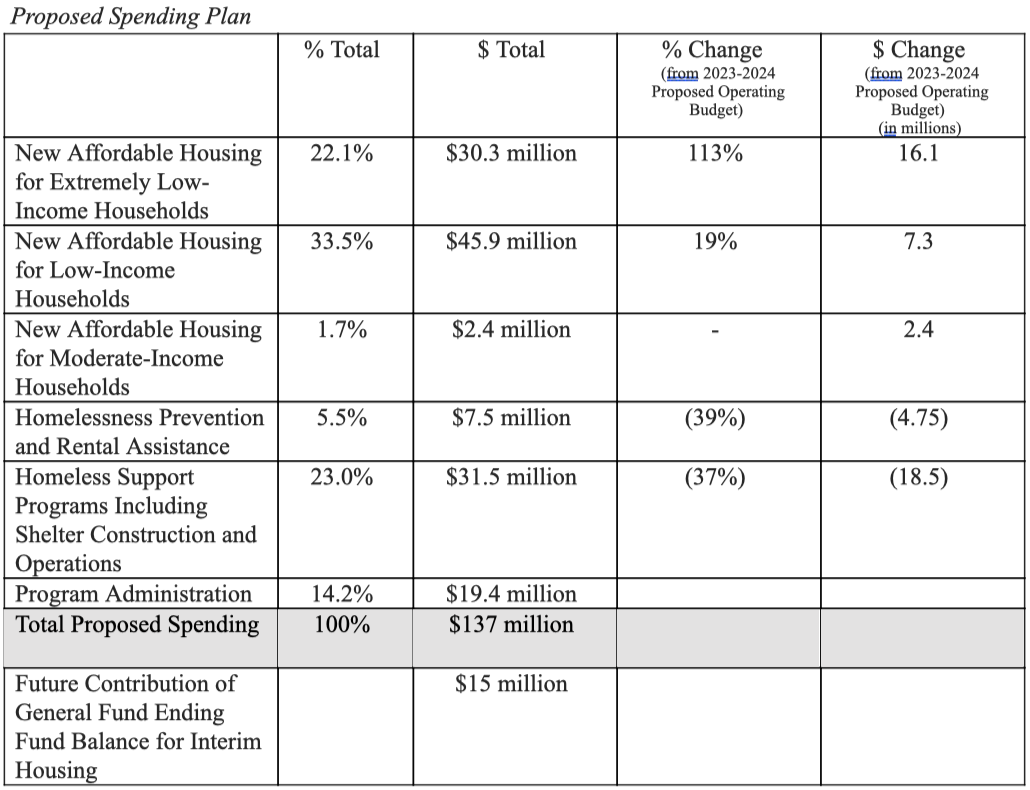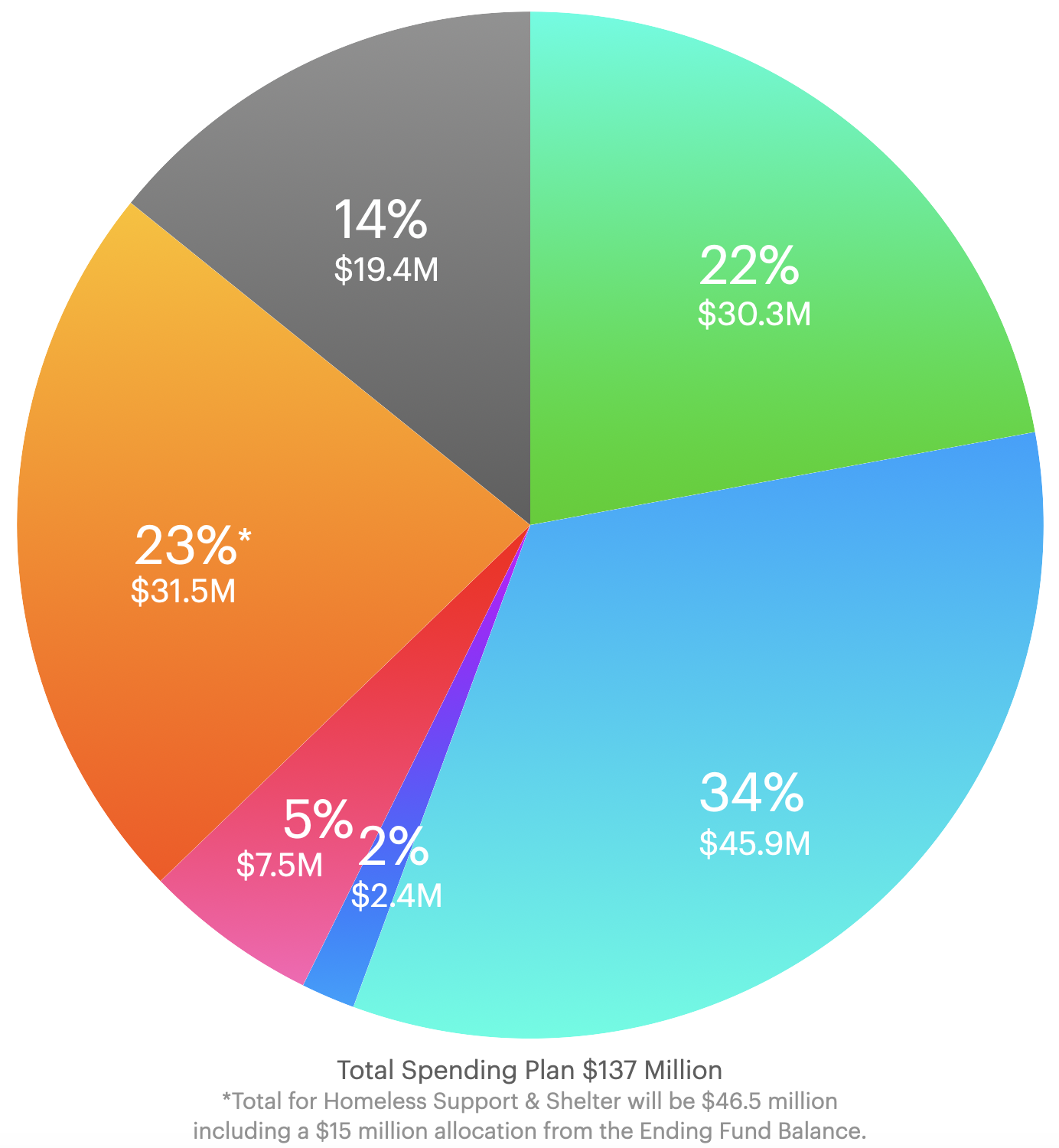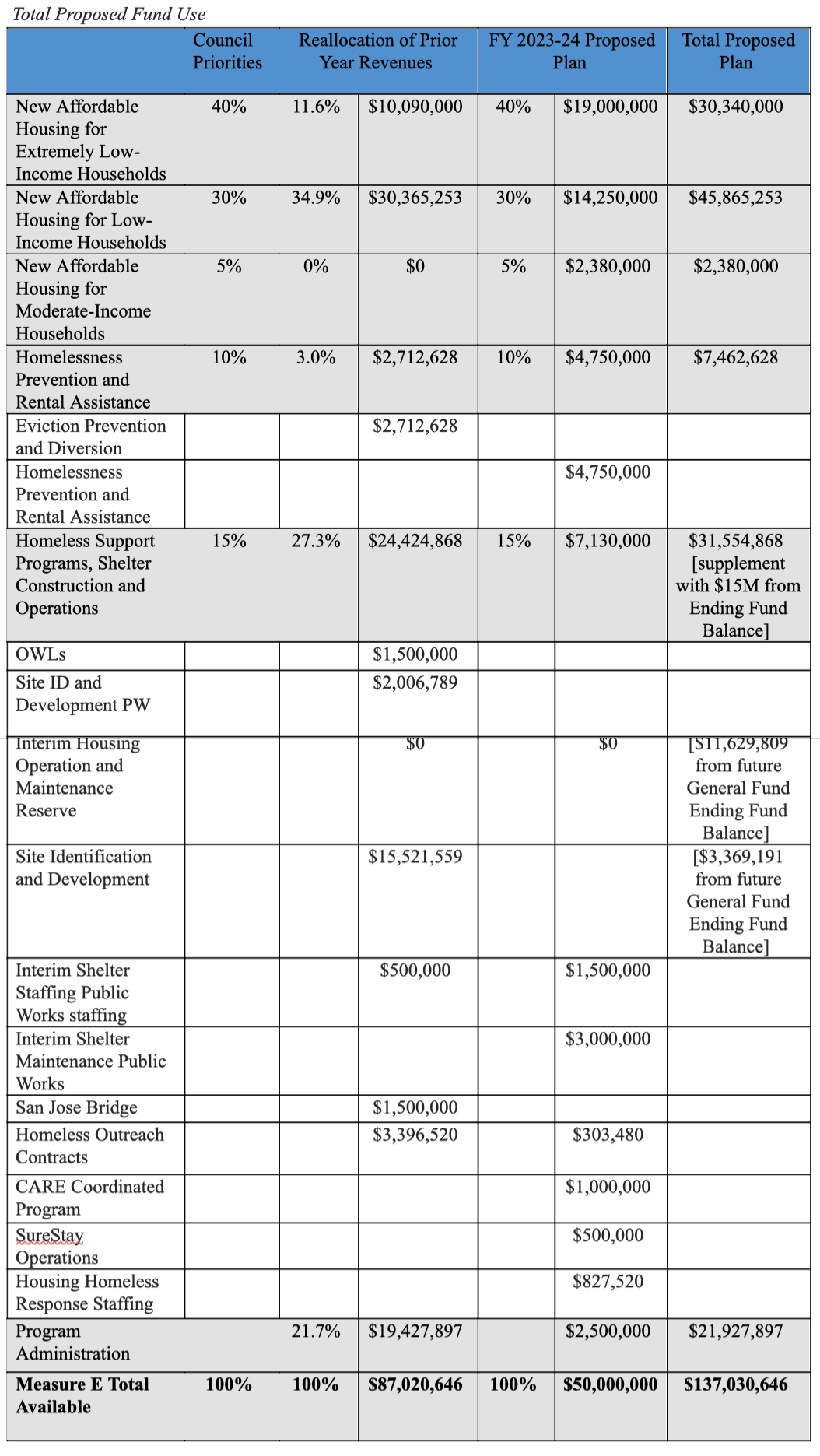Cohen Jimenez Budget Document Re: Housing, Homelessness, Measure E
The following details my plan for how to fund Mayor Mahan’s Quick Build Emergency Interim Housing without dipping into Measure E funds meant for Affordable Housing development.
In order to fund the production of affordable housing, our offices recommend reducing the reallocations from Measure E while continuing to preserve the council’s priorities of quickly building more Emergency Interim Housing sites and opening a Safe RV Parking location. The Community Plan to End Homelessness outlines many short-term and long-term strategies that the County, cities, and Community-Based Organizations need to pursue. All of these strategies are important in ending homeless, yet, with limited resources, balancing these strategies can be difficult with so many urgent needs. With our approach, we acknowledge and commit to needed short-term solutions, such as emergency interim housing, safe-parking, and RV parking, while continuing to fund long-term solutions like affordable housing.
We propose the following changes in the City Manager’s Draft Budget:
• Eliminate the $3.5 million 2023-24 allocation to San Jose Bridge.
• Keep the allocation for Homelessness Prevention programs at 10% rather than 20%, resulting in a reduction of $4.75 million from the Measure E reallocation.
• Over a two-year period, allocate up to $15 million for EIH operations from the General Fund Ending Fund Balance that is discussed in the City Manager’s Annual Report.
San Jose Bridge: This program should not be paid for using by Measure E funds since it primarily deals with employment. In 2020-2021 Analysis of Measure E allocations, Bridge funding was deemed disqualified because it focuses more on employment rather than housing. While much of the cost here is housing for San Jose Bridge participants, we believe that the funding should be found elsewhere.
• Homelessness prevention is a top priority and we know is an important tool in reducing homelessness. One of our key goals should be to reduce the number of people who become homeless for every one that is housed. We can continue to make significant progress this year as long as we maintain the same allocation from Measure E that they received last fiscal year. Therefore, we recommend keeping the 10% allocation from 2023-24 revenue. With the carryover of unallocated money, the total in the Prevention category for the coming fiscal year is $7.5 million.
• General Fund Ending Fund Balance: In order to fully fund the needs identified in the City Manager’s budget for future operations of EIH, we recommend allocating up to $15 million from the General Fund Ending Fund Balance that is made available after the fiscal year books are closed as part of the City Manager’s Annual Report, which is presented to the City Council in October 2023. Due to prudent fiscal management by our city’s Budget Office, there is always an excess balance. Over the past 5 years, this balance has been well in excess of $15 million. The council has put in place priorities for use of this balance, much of which is placed in the city’s rainy day fund. Given the emergency nature of our homelessness crisis, it is appropriate that we set aside some of our Ending Fund Balance on a one-time basis to address it. If this year’s ending balance falls short of the $15 million, we recommend recovering the full amount over two years.
• After the close of the fiscal year, we should also work with the County to determine how much funding they can contribute to EIH operations.
This proposed funding plan allows us to continue to allocate incoming Measure E dollars to the spending priorities approved by City Council in 2020. That allocation, based off the projected 2023-24 revenue of $50.0 million, would be as follows:
The priority 5% allocated for moderate-income housing provides just $2.4 million in that category. There may not be a use for this money and it may be a good idea to move that allocation into one of the low-income categories to build more resources for the next NOFA.
Our proposed allocations break down as illustrated in the table below. Note that the reduction in the Homeless Support Programs category is backfilled by use of up to $15 million from the ending fund balance.






